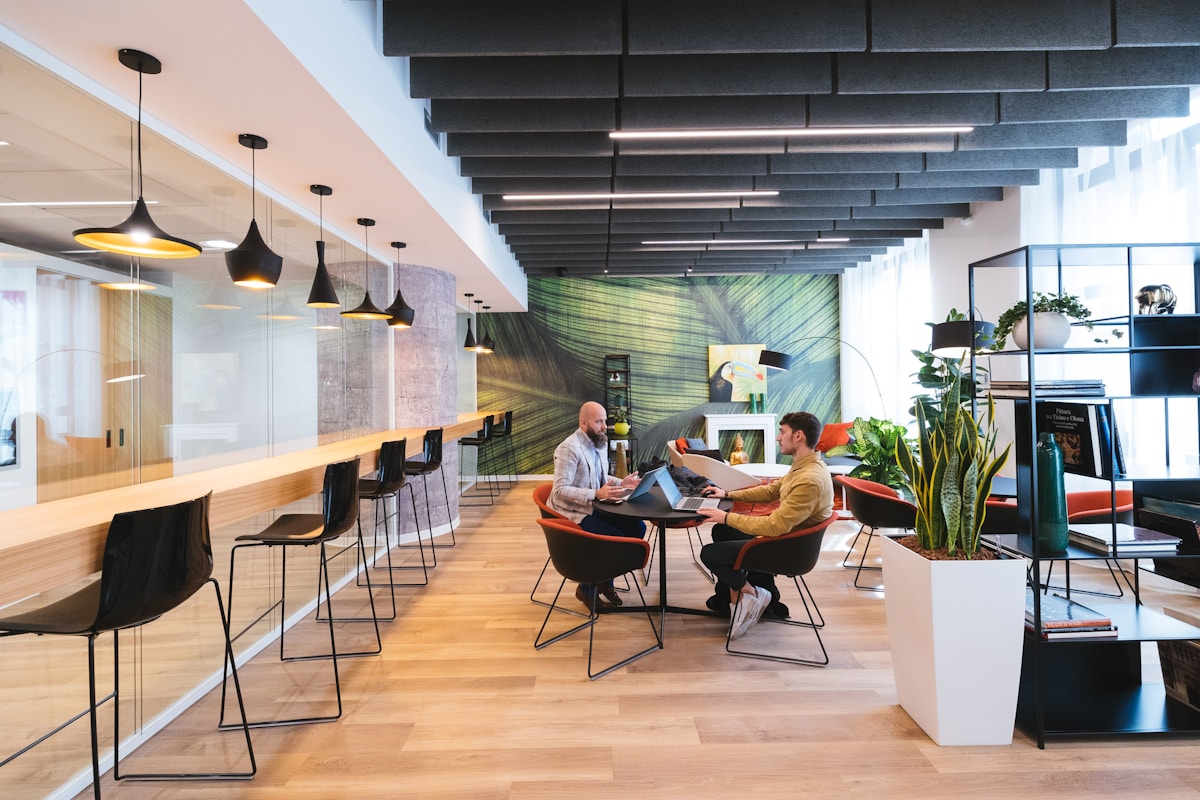Redefining Hybrid Office Space to Boost Employee Productivity

How should organizations reshape the hybrid office space to maximize productivity? What will the new workspace — from the office to homes — look like in the future? We know it will be different. But to survive and thrive in the post-COVID world, you need to adopt best practices on returning to the office.
Our Hybrid Future

Surveys say two-thirds to three-quarters of employers plan to operate on a mainly hybrid schedule after the pandemic. Most large companies plan to adopt the hybrid model. Some big corporations transitioned to having all of their remote employees work from home permanently.
An employee's desire for full-time remote work must correlate with task requirements and proven reliability. Some roles, like call center staff, are well-suited to remote work as they require no systematic collaboration.
Below, I outlined best practices on transforming workspaces based on 14 consulting projects of leaders and organizations I helped guide during these transitions.
Use of Work Space

The primary use of the office going forward will not be for individual work, as it was before the pandemic. Instead, the office will serve as a shared space for collaboration and team-building activities for the majority of the employees.
Sure, some staff will end up doing individual work in the office, in-between collaborative tasks, but the large majority of tasks will be collaborative. Individual tasks will overwhelmingly be done at home, where they are much more productive.
Currently, typical offices have 80% of their space dedicated to personal use and 20% shared space. That needs to be changed.
A hybrid model will cut costs on real estate and in-office services and products when staff less frequently come in.
While it feels nice to see each other more often to catch up but consider the following. Upon consulting, companies found that having their employees come to the office three days per week means saving about 20-30% of their costs. However, if employees come in only once a week, they can reduce about 60-70% of expenses, which is a much greater deal. Why should you pay more?
Reshape Your Office Space

Start adjusting your office space by planning for anticipated usage.
First, have the team leaders rank their preferred days of the week on a 5-point scale. Then, use survey staff and an algorithm to assign teams on various days to maximize satisfaction and avoid unjustifiable employee overflow.
Separately determine your space needs for massive events such as quarterly retreats and extensive in-person training, alternatively renting other spaces if needed.
Next, make plans to decrease your real estate footprint accordingly. Consider arranging some of your office space in coworking venues to mitigate the risks either of excess or insufficient space.
After that, you’ll want to transform your office space layout. In the hybrid model, in-office work will focus much more on direct collaboration with team members. It involves working alongside other team members who you can quickly ask for clarification or to whom you can provide guidance. Upgrade your video technology in shared spaces to facilitate meetings and cater to cross-functional teams.
Most individual cubicles and offices will have to go. Keep them at any level only for team leaders who need private spaces for sensitive conversations, as well as anyone else who needs such areas. Employees should use laptops, not desktops, allowing for primarily hot-desking.
Maintain current OSHA guidelines on pandemic precautions to reduce liability.
Funding for Home Offices

The hybrid-first model highlights the home office as a permanent arrangement for every company. A separate budget must be provided for employees’ well-equipped and comfortable home offices, or with their membership in a coworking space if necessary.
Providing employees with hotspot plans will alleviate risks of internet outages or slowdowns. Likewise, you could encourage employees to take various steps toward risk mitigation from their homes. Part of your responsibility is to incorporate them into your business continuity planning and Enterprise Risk Management strategies.
Altogether, an initial fund of $3,000 for the home office transition, plus an annual budget of $2,000 for maintenance, should be sufficient for most employees. Add at least $500 annually for working parents of young children to address parenting needs connected to working remotely.
Conclusion

Remodeling the work setup will help teams shift successfully across post-pandemic workplaces. Employers should consider their employees’ preferences within hybrid teams. Relevant needs must also be integrated into every business plan. Ergo, leaders should view research data objectively and use insights wisely to build a mutually satisfying workspace.
---
Bio: Dr. Gleb Tsipursky is an internationally-renowned thought leader in future-proofing and cognitive bias risk management. He serves as the CEO of the boutique future-proofing consultancy Disaster Avoidance Experts, which specializes in helping forward-looking leaders avoid dangerous threats and missed opportunities. A best-selling author, he wrote Never Go With Your Gut: How Pioneering Leaders Make the Best Decisions and Avoid Business Disasters (Career Press, 2019), The Blindspots Between Us: How to Overcome Unconscious Cognitive Bias and Build Better Relationships (New Harbinger, 2020), and Returning to the Office and Leading Hybrid and Remote Teams: A Manual on Benchmarking to Best Practices for Competitive Advantage (Intentional Insights, 2021). His writing was translated into Chinese, Korean, German, Russian, Polish, and other languages. He was featured in over 550 articles and 450 interviews in prominent venues. These include Fortune, USA Today, Inc. Magazine, CBS News, Business Insider, Government Executive, The Chronicle of Philanthropy, Time, Fast Company, and elsewhere. His expertise comes from over 20 years of consulting, coaching, and speaking and training for mid-size and large organizations ranging from Aflac to Xerox. It also comes from over 15 years in academia as a behavioral scientist, including 7 as a professor at Ohio State University. You can contact him at Gleb[at]DisasterAvoidanceExperts[dot]com, LinkedIn, Twitter @gleb_tsipursky, Instagram @dr_gleb_tsipursky, Medium @dr_gleb_tsipursky, and gain free access to his “Assessment on Dangerous Judgment Errors in the Workplace'' and his “Wise Decision Maker Course” with 8 video-based modules.